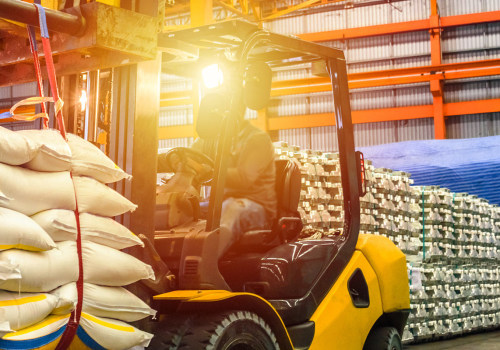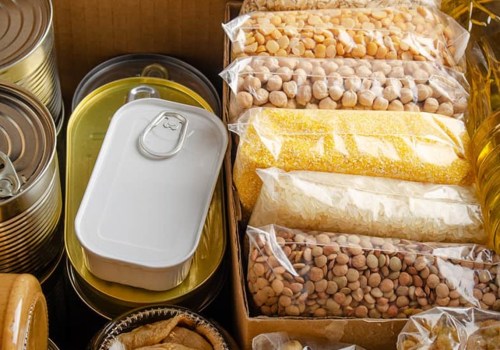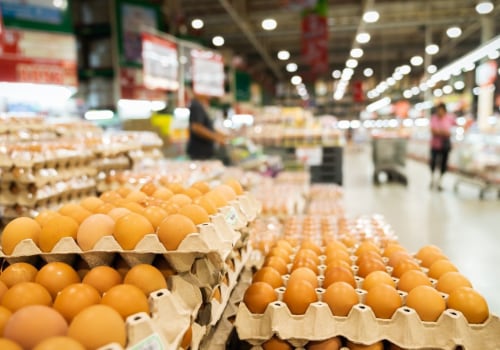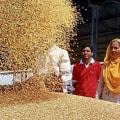In the food supply chain, food is passed from producer to consumer through the processes of production, processing, distribution, retail and consumption; therefore, food is passed from farmer to consumer in a way similar to a domino chip. During the processing and packaging phase, meat processing plants also participate. Farmers send animals to meat processing plants to be slaughtered, massacred, and sometimes processed. The increase in demand in grocery stores has continued to grow since the start of the COVID-19 pandemic.
This increase in demand is good for business profits; however, it brings with it many challenges and concerns. Communication with participants, lack of visibility and the COVID-19 pandemic have caused restaurants a lot of problems. Not all restaurants and suppliers have technology that allows them to know in real time the supply, demand and consumption of inventory in their inventory. The food supply chain starts at the farm.
Once food is produced on the farm, it moves up the supply chain to handling and storage. From there, they move on to processing and packaging, and then to distribution. Consumption is the final stage of the food supply chain. The food supply chain refers to the processes that describe how food goes from farm to table.
Processes within the food supply chain include production, handling and storage, processing and packaging, distribution and consumption. At its root, the food supply chain is what keeps everyone alive. Without it, most of the world would starve. We rely on grocery stores and our favorite restaurants to keep us fed.
The food supply chain encompasses the steps that food takes to get from its original source, the farmer, to the consumer and to the table. This chain encompasses multiple stakeholders, including manufacturers, distributors and retailers. It is often divided into five key steps:. After rebalancing supplies with outgoing orders, food service distributors now have excess capacity in their storage facilities and distribution networks, including the more expensive “cold chain”, temperature-controlled storage, equipment and logistics needed to maintain the desired low temperature.
The dilemma faced by distributors is how to stabilize their network cost structures in the meantime. They could reduce support within each facility while maintaining a presence. Or they could consolidate their networks of state-aligned distribution centers into regional centers, despite increased miles and delivery times in a highly competitive environment. However, the consolidation of some distribution centers and the departure of others would reduce overall capacity in the long term.
It would also limit local distribution options for food service companies when demand returns, also reducing channels for food service producers. Li and Wang (201), based on data from networked sensors, developed a dynamic supply chain model to improve food tracking. In addition, agro-foods receive special attention to tracking and monitoring because, as they are the most important perishable products, consumers ensure their freshness and quality. Improved technology, such as restaurant technology, makes it easier for people to communicate, especially those involved in the supply chain.
The European Commission launched a food technology innovation portal to apply innovative technologies, such as biotechnology, nanotechnology and information and communication technologies (ICT), to help food manufacturers provide more healthy, safe and natural food (European Commission, 201). As the supply chain grows, it becomes more fragmented, creating a disconnect with the original source of food. With the increase in technological trends (see Restaurant Technology Trends) and improvements, there is a greater demand for fresh and safe food. Some systems comprehensively track food from the retailer to sources, such as the farm, and others only focus on key points in the supply chain.
This section summarizes current challenges and highlights future perspectives on supply chain network structure, data collection, decision-making models, and implementations. First, the focus of the design and development of a food supply chain network structure is placed on a single distribution system or a WMS. Once food leaves the packaging plant, it's headed to the retail destination, which are often grocery stores. To this end, collaborations with ecological relations could lead to a win-win situation, since large companies will obtain economic benefits and, in turn, members of the food supply chain, such as SMEs, could also benefit.
Depending on where you are in the food supply chain, you must learn what happens to food before it reaches you and possibly after it leaves. Supply chain collaboration in the design, construction, maintenance and retirement of mission critical assets. Retailers play an important role in the FSCM, selling thousands of different products, each of which has its own supply chain with different characteristics and complexities. As for the different levels, the associated solutions, such as the food production management system, the WMS, the logistics management system, etc.
. .







Leave a Comment